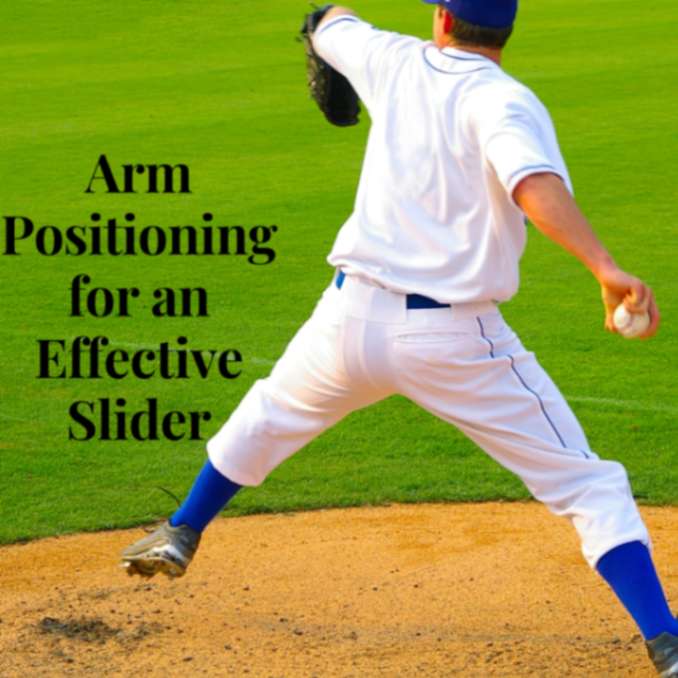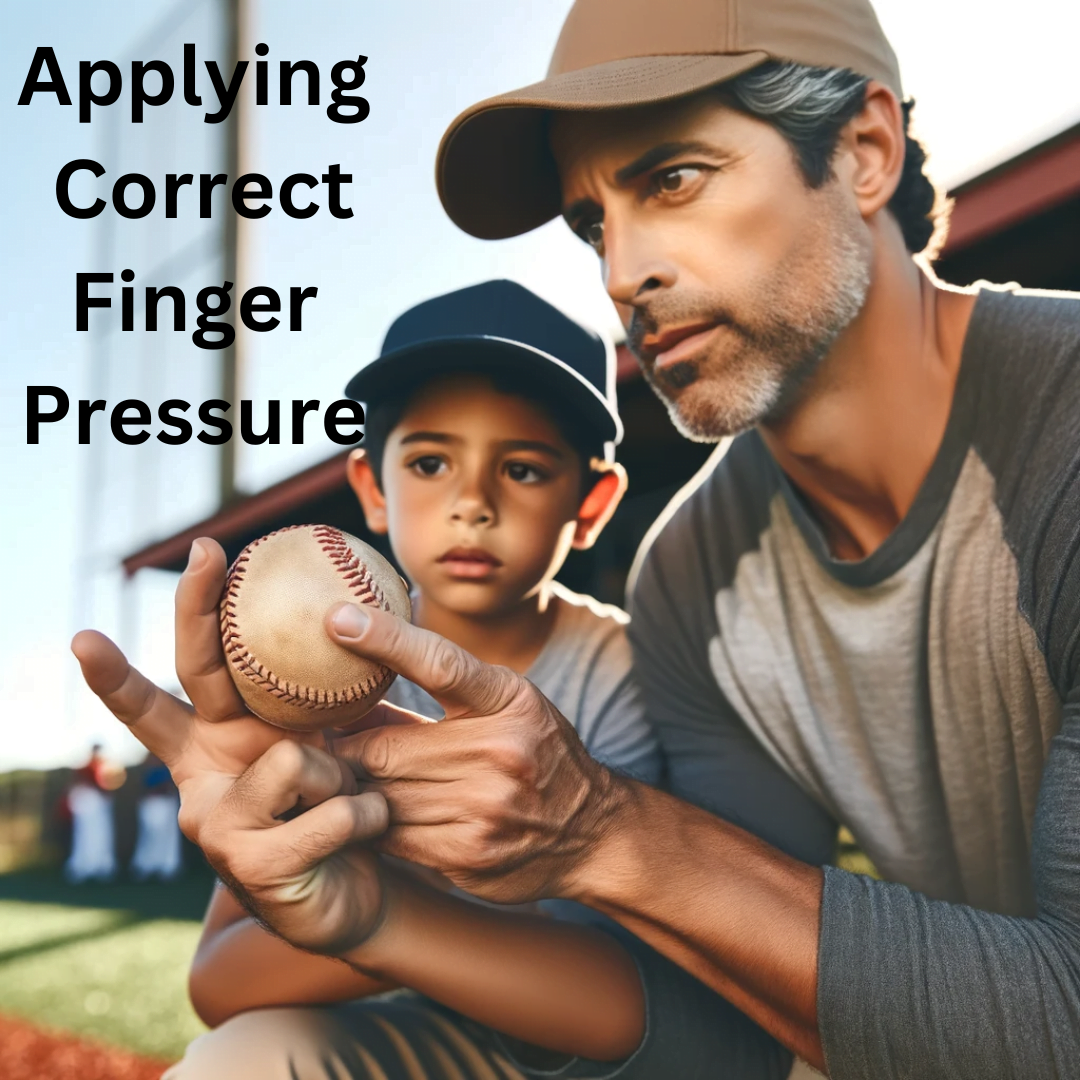
Understanding the Slider in Baseball
A pitch that is both mysterious and skillful, the slider is a real gem in the repertoire of baseball pitches. The combination of speed and an unanticipated break sends batters swinging aimlessly. What then is this secretive creature called the slider? It’s akin to a fastball with a twist in the storyline a quick swerve right before home plate that frequently leads to a spectacular strikeout. Throwing a slider requires more than just tossing a ball it also requires creating a pitch with the accuracy of a professional artist.
Pitching a slider is about outsmarting the hitter. When executed with perfection, it zips towards the batter with the confidence of a fastball and then, almost whimsically, darts away, leaving the batter flustered and off. The element of surprise is what makes the slider such a critical pitch in baseball.
As we unpack the secrets to mastering how to throw a slider, we’ll explore every detail that transforms a good pitcher into a great one. This guide is your roadmap to understanding and perfecting the slider, ensuring you have the edge to shine on the mound.
The Significance of Mastering How to Throw a Slider
In baseball’s cutthroat league, the ability to slide is vital. It’s a tactical instrument that has the ability to change the outcome of the game, not just another pitch. Gaining proficiency with a slider could be the difference between an average inning and an outstanding game that players and fans will be talking about for years to come. Learn about the average pitch speed by age to understand how sliders fit into a pitcher’s development.
A slider is a pitch that darts across the plate with such precision that it is almost impossible for the hitter to make good contact. You may master this pitch by learning how to throw one. It’s the kind of pitch that makes the game exciting for everyone watching while also giving your pitching repertoire more depth.
We’ll walk you through the entire slider tossing procedure in this in depth tutorial. You will acquire the signature movement of the slider the grip, the arm motion, and the tiny flick of the wrist. These tips will assist you in creating a slider that will confuse hitters and delight your supporters, regardless of your level of pitching experience.
The Fundamentals of Slider Mechanics. Throw a Slider
Delving into the mechanics of how to throw a slider reveals an intricate ballet of grip, arm motion, and wrist action. It’s this precise choreography that can elevate a pitcher from good to outstanding. Understanding and perfecting these fundamentals is essential for anyone looking to add this deceptive pitch to their repertoire. For more on pitching mechanics, see pitching from the stretch vs windup.
A. Perfecting the Slider Grip Technique
To begin learning how to throw a slider, let’s talk grip. Imagine shaking hands with the baseball this is the grip that initiates the slider’s magic. You’ll want to position the ball slightly off center in your hand, applying pressure with your fingers on the outer third. This isn’t just a grasp it’s a deliberate placement that dictates the ball’s path, akin to steering a car with intention and direction. Getting this grip right is the foundational step in throwing a slider that can outwit batters time and again.
B. Arm Positioning for an Effective Slider
Arm positioning is your next checkpoint in the journey of how to throw a slider. It’s not merely about how you move your arm, but the posture and angle you maintain throughout the pitch. Picture your arm as the arm of a clock, where each tick is precise, guiding the hands to tell the correct time.
Your arm should lead with confidence, setting up the trajectory for the slider to break. It’s like drawing a bowstring back, where the right angle and tension determine the arrow’s flight. For comprehensive insights into batting against different pitches, including sliders, explore this hitting guide
C. Mastering Wrist Action in a Slider Pitch
Finally, the flick of the wrist brings the slider home. It’s a subtle yet impactful motion that’s less about a dramatic twist and more about a precise snap. This is where you inject life into the pitch, giving the ball its trademark spin as it heads towards home plate. Think of it as the final note in a song that leaves the audience in awe it’s the defining move that, when mastered, completes the art of how to throw a slider.
Learn about the nuances of football laces to understand how they can influence throwing techniques

Crafting the Perfect Slider, A Step by Step Guide
To throw a slider that captures the awe of both fans and players, one must engage in a precise sequence of movements to throw a slider effectively. Each stage in the process is vital to the pitch’s effectiveness, forming a cohesive guide that, when followed meticulously, produces a stunning slider.
A. Initiating the Slider with a Proper Windup
The windup is the essential first step in the journey of how to throw a slider. This phase is about setting the rhythm and engaging the right muscles to power the pitch. As a pitcher, you coil your body, much like a spring, building potential energy that’s ready to explode forward. It’s a moment of focus, where all your training converges into the start of a dynamic movement. The goal here is not just to gather energy but to do so with balance and control, ensuring that every part of the body contributes to the forthcoming pitch.
B. Executing the Slider Release with Precision
The release, in the context of how to throw a slider, is the dramatic peak of your pitching motion. It’s the instant where all the built up energy from the windup is channeled through your arm and into the ball. The grip tightens, the wrist snaps, and at the perfect moment, the ball rolls off your fingertips, embarking on its deceptive path. This step is about timing and technique converging in a fraction of a second. The precision of the release dictates the slider’s effectiveness, making it crucial to practice this element until it’s second nature.
C. Completing the Slider with a Strong Follow through
A strong follow through is as crucial to how to throw a slider as the pitch itself. It’s the graceful conclusion of the pitching motion, ensuring the slider’s trajectory remains true and reducing the risk of injury. This movement is not merely for show, it reinforces the pitch’s direction and power.
A proper follow through involves continuing the arm’s motion even after the ball has left the hand, guiding the pitch to its intended destination. It’s the mark of a pitcher who respects the craft and cares for their long term performance and health. Explore how to break in football cleats for better performance on the field
Navigating Pitfalls, Avoiding Common Slider Mistakes
Every pitcher, whether a novice or a veteran, faces challenges when learning how to throw a slider. However, being aware of common mistakes in the technique to throw a slider and understanding how to circumvent them is critical for any player aiming to master this elusive pitch.
A. Preventing Over, Rotation of the Wrist
It’s critical to control your wrist rotation when learning how to throw a slider. When the slider over rotates, it might lose its distinct abrupt break and float languidly toward the batter, making it easier to hit. Imagine it as the perfect amount of spice added to a dish too much and it becomes too dominant. Your wrist movement must be as precise a controlled, moderate snap that gives the pitch bite without spinning it lazily.
B. Applying Correct Finger Pressure

Pitchers must utilize exact finger pressure to deliver a slider, just as sculptors employ light pressure to create their creations. If you use too much force, the ball can fly off course, if you use too little, it might not acquire the required spin. Finding the ideal balance between a paintbrush’s softness and a chisel’s stiffness is similar to finding the sweet spot when it comes to touch it takes practice and an acquired feel for the ball.
C. Maintaining Proper Body Alignment
The foundation of how to throw a slider or any pitch for that matter lies in your body alignment. Misalignment can lead to ineffective pitches and potential injuries. Consider it similar to the fundamentals of architecture, if the base isn’t stable, the structure is bound to falter. Ensuring that your stance, hip rotation, and shoulder alignment are in sync not only enhances the effectiveness of your slider but also promotes a healthy pitching motion.
Sharpening Your Slider, Essential Drills and Exercises to Throw a Slider
Consistent practice is key when you’re aiming to perfect how to throw a slider. Drills and exercises specifically designed to throw a slider are invaluable, providing the platform to refine your technique and strengthen your pitching muscles.
A. Enhancing Mechanics with Wall Drills
For individuals who are just beginning out with slider throwing, wall drills are an excellent resource. Without the extra strain of being on the mound, these drills let you concentrate on your arm mechanics and body movement. With wall drills, you may fine tune your movements, just like an artist does before painting a canvas. They can be as easy as practicing your slider action while standing close to a wall, making sure your wrist, fingers, and arm all work together to produce the characteristic spin of the slider.
B. Gaining Feedback through Partner Toss
The partner toss is a two way street of constructive feedback, crucial for anyone mastering how to throw a slider. Working with a catcher, you can receive immediate input on the pitch’s velocity, movement, and location. This real time critique is like a dialogue that helps calibrate your pitch, making subtle adjustments until the slider begins to take shape exactly as you envisioned. It’s not just about throwing the ball it’s about listening, adapting, and refining your skill with each toss.
C. Simulating Game Day with Bullpen Sessions
Pitchers who are honing their slider can bridge the gap between practice and game performance with bullpen sessions. You can assemble every component of your pitch in this controlled setting and test it in situations that mimic an actual game. You can practice throwing a slider here with the same effort and concentration that you would use on the mound in a game. These practices are essential for boosting self assurance and making sure your slider is prepared to shine and rule when the chips are up.
Mastering How to throw a Slider, Advanced Techniques and Tips
With the basics of how to throw a slider under your belt, the journey progresses to refining advanced techniques for this pitch. These tips are the seasoning that turns a good slider into a great one, allowing you to tailor your throw a slider pitch to any situation on the diamond.
A. Customizing the Slider for Different Batters
Knowing how to throw a slider that can be adjusted for different batters is a skill that separates the good from the great. It involves understanding the hitter’s weaknesses and tendencies, almost like a chess game. For a batter who struggles with breaking balls, you might tighten the spin or change the breaking point of the slider. Conversely, for a power hitter, throwing a slider with less break but more speed might be the key to getting them out. It’s about crafting a pitch that’s as unpredictable as it is effective, keeping batters guessing and off balance.
B. Strategic Use of the Slider in Game Situations
It takes strategic thought in addition to basic slider throwing skills to use a slider efficiently in a gaming situation. You have to read the count, the batter’s mentality, and the flow of the game. A well thrown slider has the potential to be the knockout blow that ends an inning in an intense scenario. It all comes down to timing the release of this secret weapon such that it enhances your entire pitching approach and helps the team win.
C. The Mental Game, Throwing the Slider with Confidence
The mental aspect of pitching can’t be overlooked when learning how to throw a slider. Confidence on the mound translates into every pitch you throw. Developing a slider that’s consistently effective requires mental toughness and the ability to stay composed under pressure. A pitcher needs to have the conviction that their slider will succeed, which comes from hours of practice and mental preparation. Your mindset should be one of calm focus, visualizing the slider’s path from your hand to the catcher’s mitt as a successful strike.
Securing Arm Health for the Slider Pitcher
Establishing a Warm Up Routine for Pitching Longevity
To begin, understanding how to throw a slider starts with an effective warm up routine. Warming up prepares your muscles and joints for the stress of pitching, particularly when executing complex pitches like the slider. It’s not just about stretching, it’s about activating your arm for performance.
Tailor your warm up to mimic the pitching motion, engage in dynamic stretches, and gradually increase the intensity of your throws. This methodical approach sets a foundation for arm health and ensures you’re ready to deliver pitch after pitch without undue stress on your arm. Remember, a thorough warm up routine is the first step to a long and healthy pitching career.
Regulating Pitch Count and Emphasizing Rest
It’s critical to keep an eye on your pitch count and incorporate enough rest into your routine when honing your slider throwing technique. Pitching is similar to running a marathon in that both require stamina and pace. Monitoring the quantity of sliders and total pitches thrown can aid in the prevention of overuse injuries.
To ensure that your muscles and tissues have time to heal, make sure you adhere to the suggested rest guidelines. The caliber of your sleep is equally as crucial as the quantity of pitches. To keep your arm in top condition, make sure you’re getting enough sleep and using rehabilitation methods like compression or ice.
Identifying and Responding to Arm Fatigue
Being acutely aware of one’s own arm tiredness is a necessary skill for throwing a slider. If left untreated, arm tiredness can develop silently and result in more severe damage. Keep an eye out for symptoms such as reduced speed, diminished accuracy, or persistent pain.
Take action at the first sign of exhaustion by altering your workout, cutting back on the number of pitches, or getting more rest. Seek advice from trainers and medical experts to control tiredness and keep it from impeding your advancement. Being proactive about fatigue can make the difference between a short term setback and an injury that ends a career.
Perfecting the Slider with Advanced Techniques
Tailoring the Slider to the Batter’s Profile
Progressing in how to throw a slider means being able to adjust your pitch to different hitters. This level of skill separates proficient pitchers from exceptional ones. Analyze the batter’s weaknesses are they late on fastballs, or do they struggle with off speed pitches? Adjust the tightness of your slider’s spin and the breaking point based on the batter’s tendencies. This customization can make your slider a powerful tool that’s as unpredictable as it is effective. The goal is to keep the batter guessing, off balance, and ultimately, off the bases.
Strategic Implementation of the Slider During Games
Effective use of a slider transcends the mechanics of how to throw a slider it requires acute strategic insight. To truly harness the power of this pitch, you must read the game’s rhythm, the batter’s psychology, and the stakes of the moment. Is the batter anticipating a fastball?
Is it a high pressure count? These are moments when a well executed slider can act as a pivotal play, shifting the momentum of the game. A slider should not be thrown at random but should serve as a calculated element within your broader pitching strategy, contributing to the overall success of your team’s performance.
Harnessing Confidence in Your Slider
The psychological dimension is paramount when perfecting how to throw a slider. Confidence on the mound, especially when preparing to throw a slider, is as crucial as the physical mechanics of the pitch. Developing a consistent, effective slider requires mental resilience and poise under pressure.
Believe in your slider and in your ability to execute it successfully. This confidence comes from rigorous practice and mental preparation, including visualization and focus strategies. Approach each pitch with a clear mind, visualizing the slider’s trajectory into the catcher’s mitt, and trust in your ability to deliver a pitch that not only strikes out batters but also defines your pitching identity.
Advancing Your Slider Technique
Tailoring the Slider for Different Hitters
The key to throwing a slider with advanced skill, especially when you aim to throw a slider, is to adjust your pitch. This is to take advantage of different hitters’ limitations. A thorough knowledge of a batter’s profile is essential to this customizing procedure. While some batters may have trouble hitting sliders that break late, others may struggle with timing.
You may make the slider, particularly when you throw a slider, more difficult for the hitter to hit. This can be done by adjusting its break point, spin, and velocity. This degree of personalization can mean the difference between a strikeout and a home run for a pitcher. But it takes skill and a sophisticated knowledge of pitching mechanics to use effectively
Strategic Use of the Slider in Games
Knowing how to throw a slider is only half the battle, using it strategically during a game is where the real skill comes into play. A pitcher must assess the game situation, the batter’s stance, and the current count before deciding to throw a slider.
It could be a game changing pitch when thrown on a full count. Also when the batter is expecting a fastball. The slider should be an integral part of your pitching strategy, deployed not just for its surprise factor, but also as a calculated move within the context of the game. This strategic approach to pitching can keep batters off balance and contribute significantly to your team’s success.
Building Confidence in Your Slider
The secret to throwing a slider well is confidence. A pitcher’s mental toughness may be put to the test with this pitch, particularly under duress. Thorough preparation is the first step towards developing a resilient attitude, both in terms of your mental approach to the game and on the field. It takes practice to make your slider more natural and efficient the more you throw it, the better.
You may increase your confidence with mental rehearsals, visualization exercises, and a strong emphasis on positive results. You should have complete faith in the efficacy of your slider when you take the mound. A pitcher’s self assured demeanor has the power to terrify batters and improve their performance to unprecedented levels.
Conclusion
In conclusion, developing your skills to throw a slider involves more than just learning a new pitch. It includes a commitment to good arm care, which encompasses managing pitch counts, warming up properly for a slider, and dealing with exhaustion.
It also entails honing your technique to adjust the slider for various hitters and employing it tactically during games. In the end, a slider’s ability to mix mental assurance, physical prowess, and strategic thinking is critical to success. The slider can become a key component of your pitching repertoire. And with perseverance and deliberate preparation, improving your effectiveness and fortitude on the field.
FAQs
- What is a slider in baseball?
A slider is a pitch that combines the speed of a fastball with the lateral movement of a curveball. It’s designed to deceive the batter by appearing as a fastball before breaking to the side as it reaches home plate. - How do you grip a slider?
To grip a slider, place your index and middle fingers across the seams of the baseball, similar to a two seam fastball. Your thumb should rest on the back seam. The key is to ensure the pressure is more on the middle finger to encourage the ball to spin off this finger upon release, creating the slider’s characteristic break. - What are the mechanics of throwing a slider?
The mechanics of throwing a slider involve a grip and wrist action that differs slightly from other pitches. As you release the ball, your wrist should snap downwards and slightly to the side. The motion is akin to turning a doorknob, which imparts the spin that causes the slider’s break. - Can throwing sliders cause arm injuries?
Throwing sliders can be taxing on the arm, particularly the elbow and shoulder, due to the torque required to generate the spin. Proper technique, conditioning, and not overusing the pitch are important to prevent injuries. - How can I practice throwing a slider?
Practicing a slider involves drills focusing on grip, wrist action, and release point. Start with dry throws without the ball to get the wrist action down, then progress to throwing sliders with minimal effort, focusing on the spin rather than speed. Gradually increase intensity as your mechanics improve.



